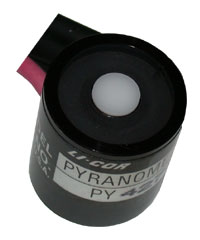This product is no longer available and has been replaced by: LI200R-L. Some accessories, replacement parts, or services may still be available.

| Services Available | |
|---|---|
| Repair | No |
| Calibration | Yes |
| Free Support | No |
Overview
For most applications, the LI200X has replaced the LI200S. The LI200S is essentially the same sensor as the LI200X except it does not have the same completion circuit to scale its output voltage. A unique calibration entry for each probe is required. Campbell Scientific does not record these original calibrations, but LI-COR, the manufacturer, does; contact Beth McCulley (800) 477-3576. You'll need the pyranometer's LI-COR serial number (on sensor housing); should begin with the letters PY...
The "-L" on a product model indicates that the cable length is specified at the time of order.
Images

Compatibility
Please note: The following shows notable compatibility information. It is not a comprehensive list of all compatible products.
Dataloggers
| Product | Compatible | Note |
|---|---|---|
| 21X (retired) | ||
| CR10 (retired) | ||
| CR1000 (retired) | ||
| CR10X (retired) | ||
| CR200 (retired) | ||
| CR211 (retired) | ||
| CR216 (retired) | ||
| CR23X (retired) | ||
| CR3000 (retired) | ||
| CR500 (retired) | ||
| CR5000 (retired) | ||
| CR510 (retired) | ||
| CR800 (retired) | ||
| CR800 (retired) | ||
| CR850 (retired) | ||
| CR9000 (retired) | ||
| CR9000X (retired) |
Additional Compatibility Information
One differential analog input channel per probe is required.
Specifications
| Typical Error | < ±5% error (under natural daylight conditions) |
| Typical Sensitivity | 0.2 kW m-2 mV-1 |
| Operating Humidity | 0 to 100% |
| Sensor Diameter | 3.0 cm (1.2 in.) |
| Cable Diameter | 0.5 cm (0.2 in.) |
| Sensor Height | 3.3 cm (1.3 in.) |
| Weight | 0.14 kg (0.3 lb) |
Documents
Frequently Asked Questions
Number of FAQs related to LI200S-L: 1
-
The information included on a calibration sheet differs with each sensor. For some sensors, the sheet contains coefficients necessary to program a data logger. For other sensors, the calibration sheet is a pass/fail report.
Privacy Policy Update
We've updated our privacy policy. Learn More